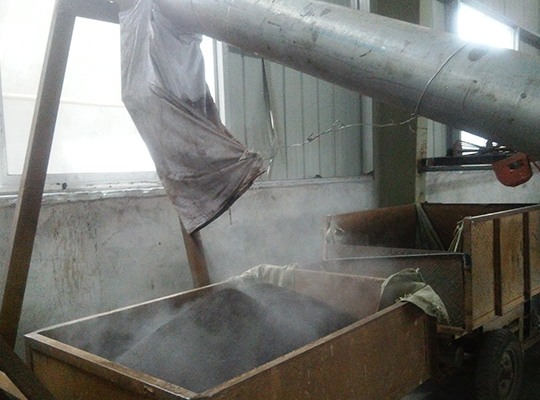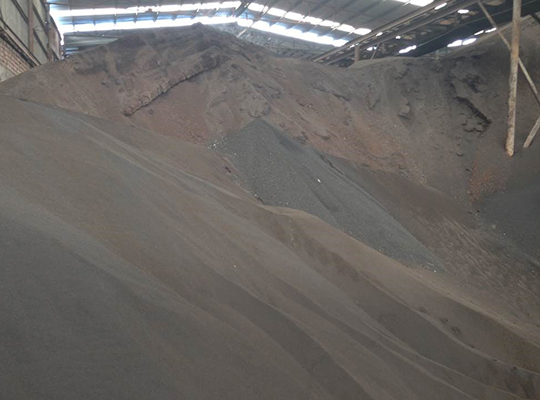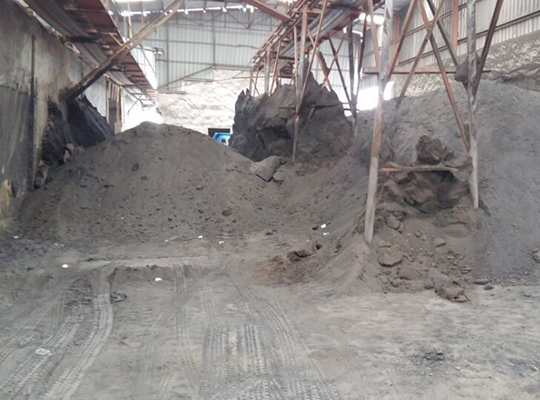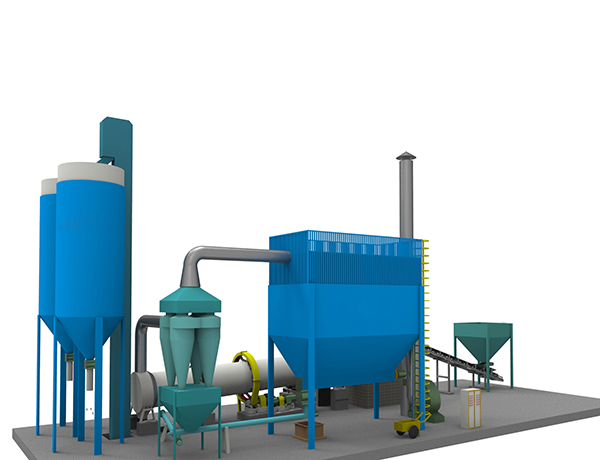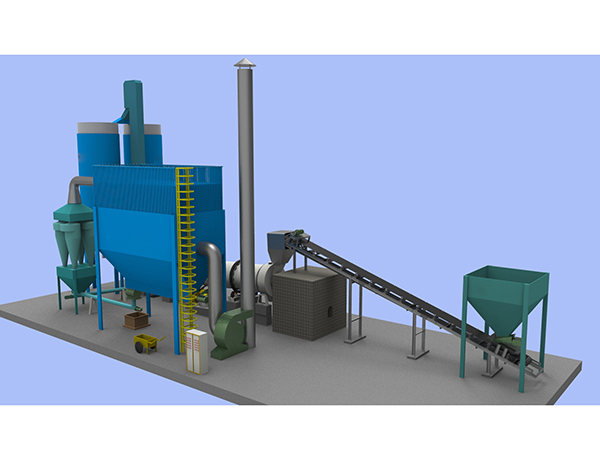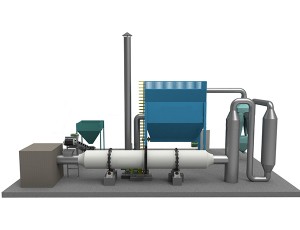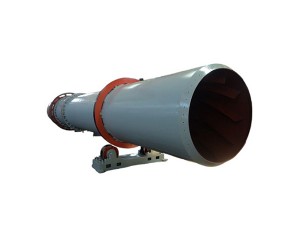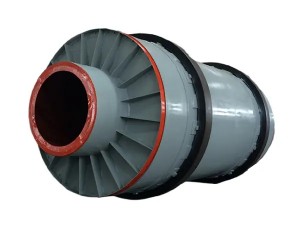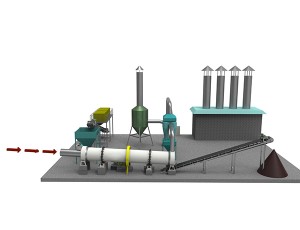

Sludge/Coal Slime Drying System
Sludge/Coal Slime Drying System
System Description
The most traditional disposal way of the livestock manure is to sell as farmyard manure with the low price and be used directly as the agricultural fertilizer, its economic value is not to fully explored and utilized. In fact, these are the precious fodder and fertilizer resources, if it can be developed and utilized, it will have great significance to the organic fertilizer manufacturing, to the development of planting and breeding industry, to promote agricultural production and income, energy saving and pollution-free green food, green agriculture development, to environmental protection and people's health.
With the continuous enhance of people's awareness of environmental protection, and sludge drying technology is also in the rapid development, the constant innovation and improvement also happens in the aspects of energy saving, safety, reliability, sustainability. Our company sludge drying system is going to reduce the water content of dewatered sludge from 80 + 10% to 20 + 10%. The advantages of our system are as follows:
1. The weight of the dried sludge can be reduced to 1/4 weight of wet material before drying, which greatly reduces the enterprise's environmental and economic pressure;
2. The air inlet temperature of the dryer is 600-800℃, and it can be used for sterilization, deodorant, etc. at the same time of drying, and reliable guarantee will be provided for the utilization of dried products;
3. The dried products can be used as feedstuff, fertilizer, fuel, building materials, raw materials for extracting heavy metals, to realize waste utilization.
The dewatered sludge will be transported to feeding head of the dryer through the screw conveyor after scattering, and then it will be sent into the inside of the dryer through the unpowered spiral sealing feeder (the patent technology of our company), and going through several following working areas after getting into the dryer:
1. Material leading-in area
The sludge will come into contact with the high temperature negative pressure air after getting into this area and plenty of water will be rapidly evaporated, and the sludge can’t be formed into sticky stuff under the stirring of large guide angle lifting plate.
2. Cleaning area
The material curtain will be formed while the sludge is lifted up at this area, and it will cause the material stick on the cylinder wall while it’s falling down, and the cleaning device is installed at this area (Lifting style stirring plate, X type second time stirring plate, impacting chain, impacting plate), the sludge can be quickly removed from the cylinder wall by the cleaning device, and the cleaning device can also crush the materials which are bonded together, so as to increase the heat exchange area, increase the time of heat exchange, avoid the generation of wind tunnel phenomenon, improve the drying rate;
3. Inclined lifting plate area
This area is the low temperature drying area, the slime of this area is at the low moisture and loose state, and there is no adhesion phenomenon at this area, the finished products reach the moisture requirements after the heat exchange, and then enter the final discharge area;
4. Discharging area
There aren’t stirring plates at this area of the dryer cylinder, and the material will be rolling to the discharging port
The sludge gradually becomes loose after drying, and discharged from the discharging end, and then sent to the designated position by the conveying device, and the fine dust drawn out along with the tail gas is collected by the dust collector.
Hot air enters into the drying machine from the feeding end, and the temperature is gradually reduced at the same time of material convection heat transfer, and the water steam taken out under the suction of induced draft fan, and then emitted into the air after processing.
Application after drying
Heavy metal recycling
During the wastewater treatment process of the smelting plant, the circuit board printing factory, electroplating factories and other enterprises, and the sludge produced contains plenty of heavy metals (copper, nickel, gold, silver, etc.). There will be a major pollution if these metal elements are drained, but considerable economic benefits can be reached after extraction and refining.
Incineration power generation
The approximate calorific value of the dried sludge is from 1300 to 1500 calories, three tons of dry sludge can be equivalent to one ton of 4500 kcal coal, which can be burned in the furnace mixed with coal.
Building material
Concrete aggregate, cement admixture and the production of pavement encaustic brick, permeable brick, fiber board, to make bricks by adding into the clay, its strength is equivalent with common red bricks, and it’s with a certain amount of heat, in process of fired brick, the spontaneous combustion can be reached to increase the heat.
Organic fertilizer
The dried sludge will ferment into high quality organic fertilizer after adding the cow manure, with good fertilizer efficiency, safe and convenient use, and disease resistance and to promote growth, which can also fertilize soil.
Agricultural usage
There is high content of N, P and K in the sludge, and it’s much higher than that of pig manure, cattle manure and chicken manure, and there is rich organic compound content. It can be used as agricultural fertilizer after the processing of sludge drying system, and can make quality soil through re-proportioning landfill.
Technical Parameters
|
Model |
Cylinder diameter(mm) |
Cylinder length(mm) |
Cylinder volume(m3) |
Cylinder rotary speed (r/min) |
Power(kW) |
Weight(t) |
|
VS0.6x5.8 |
600 |
5800 |
1.7 |
1-8 |
3 |
2.9 |
|
VS0.8x8 |
800 |
8000 |
4 |
1-8 |
4 |
3.5 |
|
VS1x10 |
1000 |
10000 |
7.9 |
1-8 |
5.5 |
6.8 |
|
VS1.2x5.8 |
1200 |
5800 |
6.8 |
1-6 |
5.5 |
6.7 |
|
VS1.2x8 |
1200 |
8000 |
9 |
1-6 |
5.5 |
8.5 |
|
VS1.2x10 |
1200 |
10000 |
11 |
1-6 |
7.5 |
10.7 |
|
VS1.2x11.8 |
1200 |
11800 |
13 |
1-6 |
7.5 |
12.3 |
|
VS1.5x8 |
1500 |
8000 |
14 |
1-5 |
11 |
14.8 |
|
VS1.5x10 |
1500 |
10000 |
17.7 |
1-5 |
11 |
16 |
|
VS1.5x11.8 |
1500 |
11800 |
21 |
1-5 |
15 |
17.5 |
|
VS1.5x15 |
1500 |
15000 |
26.5 |
1-5 |
15 |
19.2 |
|
VS1.8x10 |
1800 |
10000 |
25.5 |
1-5 |
15 |
18.1 |
|
VS1.8x11.8 |
1800 |
11800 |
30 |
1-5 |
18.5 |
20.7 |
|
VS1.8x15 |
1800 |
15000 |
38 |
1-5 |
18.5 |
26.3 |
|
VS1.8x18 |
1800 |
18000 |
45.8 |
1-5 |
22 |
31.2 |
|
VS2x11.8 |
2000 |
11800 |
37 |
1-4 |
18.5 |
28.2 |
|
VS2x15 |
2000 |
15000 |
47 |
1-4 |
22 |
33.2 |
|
VS2x18 |
2000 |
18000 |
56.5 |
1-4 |
22 |
39.7 |
|
VS2x20 |
2000 |
20000 |
62.8 |
1-4 |
22 |
44.9 |
|
VS2.2x11.8 |
2200 |
11800 |
44.8 |
1-4 |
22 |
30.5 |
|
VS2.2x15 |
2200 |
15000 |
53 |
1-4 |
30 |
36.2 |
|
VS2.2x18 |
2200 |
18000 |
68 |
1-4 |
30 |
43.3 |
|
VS2.2x20 |
2200 |
20000 |
76 |
1-4 |
30 |
48.8 |
|
VS2.4x15 |
2400 |
15000 |
68 |
1-4 |
30 |
43.7 |
|
VS2.4x18 |
2400 |
18000 |
81 |
1-4 |
37 |
53 |
|
VS2.4x20 |
2400 |
20000 |
91 |
1-4 |
37 |
60.5 |
|
VS2.4x23.6 |
2400 |
23600 |
109 |
1-4 |
45 |
69.8 |
|
VS2.8x18 |
2800 |
18000 |
111 |
1-3 |
45 |
62 |
|
VS2.8x20 |
2800 |
20000 |
123 |
1-3 |
55 |
65 |
|
VS2.8x23.6 |
2800 |
23600 |
148 |
1-3 |
55 |
70 |
|
VS2.8x28 |
2800 |
28000 |
172 |
1-3 |
75 |
75 |
|
VS3x20 |
3000 |
20000 |
141 |
1-3 |
55 |
75 |
|
VS3x23.6 |
3000 |
23600 |
170 |
1-3 |
75 |
85 |
|
VS3x28 |
3000 |
28000 |
198 |
1-3 |
90 |
91 |
|
VS3.2x23.6 |
3200 |
23600 |
193 |
1-3 |
90 |
112 |
|
VS3.2x32 |
3200 |
32000 |
257 |
1-3 |
110 |
129 |
|
VS3.6x36 |
3600 |
36000 |
366 |
1-3 |
132 |
164 |
|
VS3.8x36 |
3800 |
36000 |
408 |
1-3 |
160 |
187 |
|
VS4x36 |
4000 |
36000 |
452 |
1-3 |
160 |
195 |
Working Sites’ Pics
